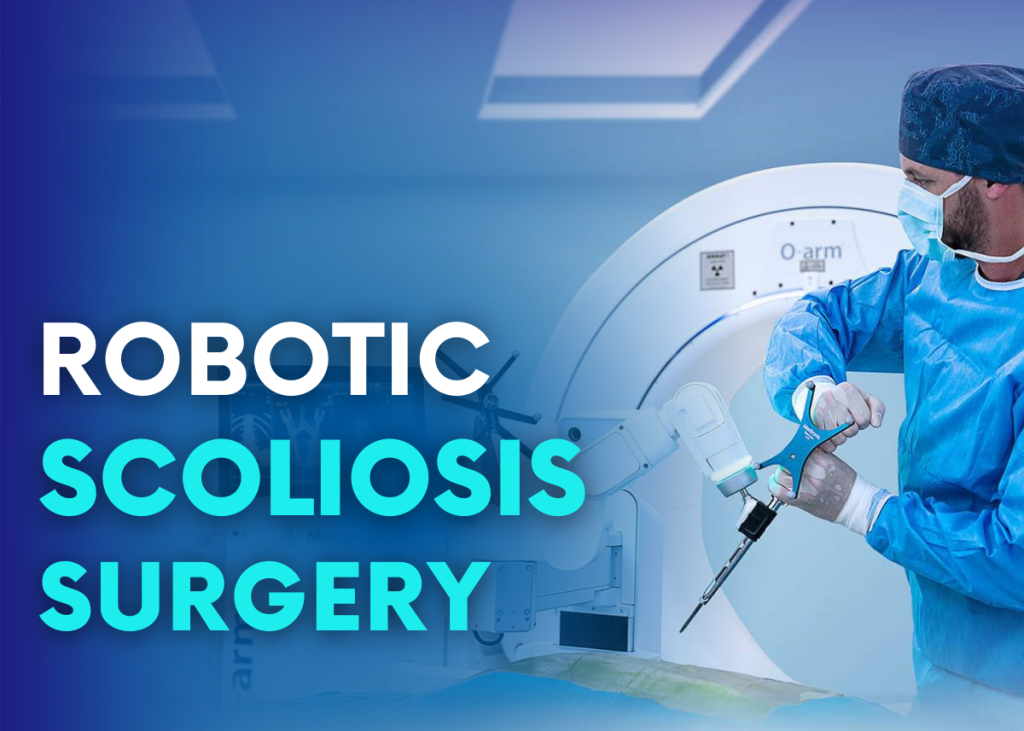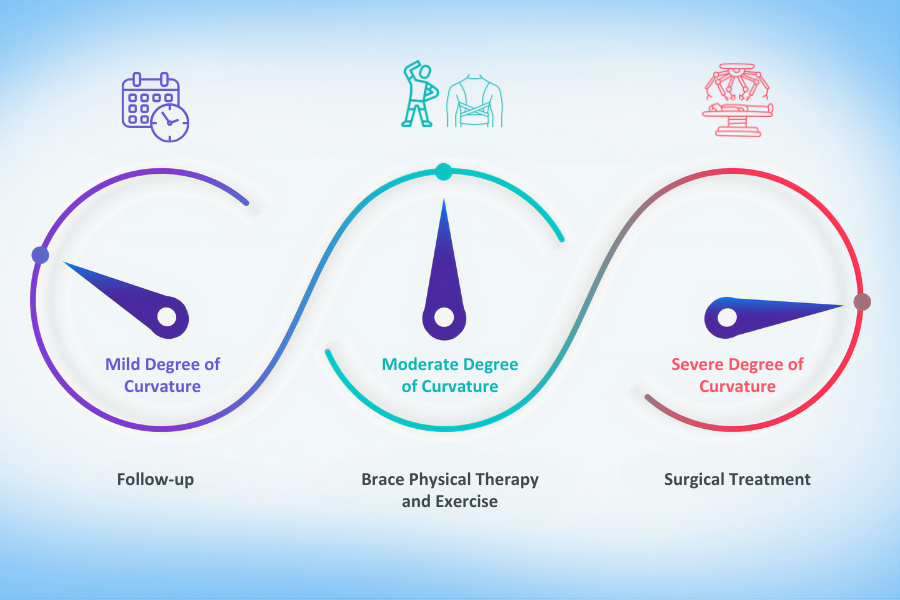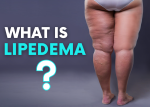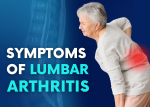
The era of “Robotic Scoliosis Surgery” has begun, reducing the risk of nerve and vascular injury in scoliosis surgeries to a minimum. Scoliosis surgeries require extremely delicate surgical procedures because they involve nerve roots and the area around the spinal cord. During the surgery, damaging a nerve can lead to complications such as paralysis and nerve injuries. Therefore, it is normal for individuals to have concerns during the decision-making process for scoliosis surgery.
However, in today’s world, modern technologies have been developed to minimize the risks of scoliosis surgery. If you are also concerned about paralysis and other potential risks of spine surgery, and this is causing you to postpone your treatment process, you can put your concerns to rest and learn more about robotic scoliosis surgeries by continuing to read our article.
Table Of Contents:
- What is Scoliosis-Spinal Curvature?
- Treatment Options for Spinal Curvature
- Robotic Surgery in Scoliosis Surgery
- How Is Robotic Scoliosis Surgery Performed?
- Advantages of Robotic Scoliosis Surgery
What is Scoliosis-Spinal Curvature?
Scoliosis, also known as spinal curvature, is a condition that can occur during childhood and adolescence, causing the spine to curve in a C (single curve) or S (double curve) shape. In the treatment of spinal curvature, the degree and severity of the curvature are important factors to consider. In determining the severity of the curvature, the “degree of curvature” is taken into account. These degrees are divided into three groups: mild, moderate, and severe.

In the grading of spinal curvature, more advanced diagnostic radiological tests such as X-rays and magnetic resonance imaging (MRI) are required. The evaluation of these imaging methods plays an important role in the diagnosis and treatment of scoliosis.
Treatment Options for Spinal Curvature
The treatment of spinal curvature is individually tailored to each patient, taking into consideration the degree of curvature and its progression. In addition, each treatment option varies depending on the patient and the type of scoliosis.
- Mild Curvature: Curvatures that are less than 20 degrees are referred to as mild curvature. For the curvature to be defined as scoliosis, it needs to be above 10 degrees. Curvatures that are less than 10 degrees are referred to as “spinal asymmetry.” For mild curvatures, a home exercise program is recommended. Regular follow-up is necessary to determine if there is progression in the degree of curvature.
- Moderate curvature of the spine refers to spinal curves ranging from 20 to 40 degrees. Moderate curvatures are typically diagnosed during adolescence. Treatment includes wearing a brace, physical therapy, and exercises.
- Severe curvature of the spine is defined as a curvature of 40 degrees or more. When non-surgical treatments are not sufficient and in cases of severe curvature, especially when there are back, lumbar, and leg pains, surgical treatment is recommended.

Robotic Surgery in Scoliosis Surgery
When left untreated, spinal curvature (scoliosis) can lead to serious issues such as heart and lung damage. As a result, when non-surgical treatment methods are insufficient and in cases of severe spinal curvature, “scoliosis surgery” is necessary. In cases where scoliosis surgery is deemed necessary, modern “Robotic Scoliosis Surgery” is implemented to minimize the risks associated with surgery through high-precision procedures.

Robot-assisted scoliosis surgery is a cutting-edge technology that minimizes the risk of paralysis, nerve damage, and vascular injury in spinal surgeries, ensuring high precision and reliability during the procedure. Scoliosis surgery is performed using robotic spine surgery. Thanks to the robotic technology used, a pre-operative surgical plan tailored to the spinal structure of each patient is created. Thus, during the surgery, screws are placed into the spine with an accuracy of 99.5% or higher.
So, why is it important to place screws and other surgical implants with high accuracy? So, what does 99.5% accuracy mean for us?
In the spinal region where scoliosis surgery is performed, there are important anatomical structures such as the spinal cord, nerves, blood vessels, and internal organs. As a result, any error in the placement of screws or other medical implants can pose a risk of nerve damage, vascular injury, or paralysis. However, scoliosis surgeries performed with robotic systems are among the latest developments that will alleviate patients’ fears of paralysis and other potential risks. However, scoliosis surgeries performed with robotic systems are developments that will alleviate patients’ concerns about potential risks.

How Is Robotic Scoliosis Surgery Performed?
In robotic scoliosis surgery, just like in traditional scoliosis surgeries, implants consisting of screws and metal rods are placed on the vertebrae to correct the curvature and allow the fused vertebrae in the corrected area to fuse together.
In spinal curvature surgeries using modern robotic systems, the points where implants such as screws and metal rods will be placed are determined with extremely precise and detailed calculations. Thus, during the surgery, the angle and position at which screws and other implants will be placed on the spine are determined most accurately. Additionally, the surgeon’s ability to monitor the procedures performed during surgery simultaneously and in three dimensions ensures that the surgery is performed according to plan.
The method used in robotic scoliosis surgery varies from person to person and can be performed in two different ways: minimally invasive and open.
In cases of mild to moderate spinal curvature occurring in a specific part of the spine, robotic surgery is performed with minimal invasive techniques, aiming to minimize damage to body tissues through small incisions.
In children with ongoing bone maturation and growth, extendable metal rods (rods) are used, or in cases of severe spinal curvature, the spinal area is fully exposed to perform robotic scoliosis surgery.
Patients being informed about robotic scoliosis surgery helps reduce their concerns about the surgery. It is also effective in managing the preoperative and postoperative process optimally. Therefore, it is important for patients who will undergo spinal surgery to research surgical options, methods, and technologies to obtain information about robotic spinal surgery.
Advantages of Robotic Scoliosis Surgery
Robotic scoliosis surgery offers many advantages, such as high precision in screw placement, almost negligible radiation exposure, significantly lower blood loss, and a much lower risk of complications.

Some of the advantages of scoliosis surgery performed with the assistance of robotic systems include:
- Surgery is performed in a way that is most suitable for the patient’s anatomy through preoperative planning.
- Surgical implants like screws are placed in the spine with the highest accuracy and precision during the surgery.
- Procedures such as the placement of screws in the spine are monitored in real-time during surgery using three-dimensional (3D) imaging. This minimizes the margin of error that may occur during surgery.
- After surgery, patients experience less pain and a faster recovery process.
You can contact us to get detailed information about Robotic Scoliosis Surgery, which is performed in some of the world’s leading and modern healthcare centers; you can also share your questions with us in the comments.









Leave a Comment